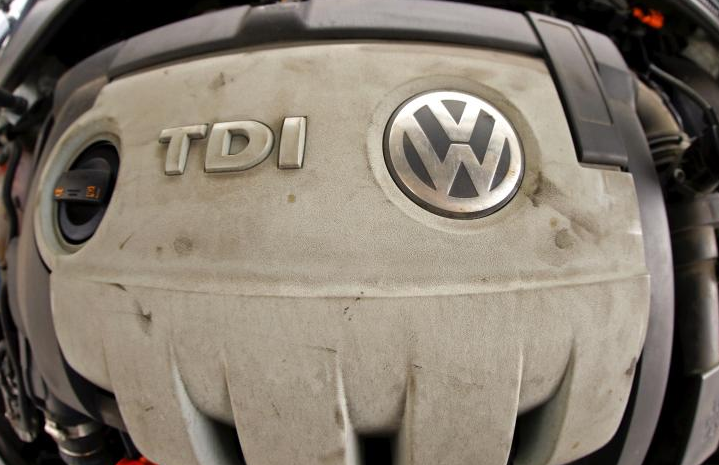Volkswagen Is Not the Only One with a "Defeater Device"
It has always seemed odd that the ultimate power of man over nature—science—is supposed to be what will preserve the naturalness of the environment.
Last time we celebrated Earth Day, President Obama had no doubts when he told the “science guy” Bill Nye that it is “part of our constitutional duty” to promote science for the environment. “I’m not a scientist either, but I know a lot of scientists,” said the President. “I have the capacity to understand science. I have the capacity to look at facts and base my conclusions on evidence.”
At the Asia Pacific Economic Cooperation summit leading up to the 2015 United Nations climate conference in Paris, he urged everyone “to come together around an ambitious framework” based on the best science to protect the world from climate change. White House spokesman Josh Earnest added: “It is going to require countries making good on promises to cut carbon pollution, and to doing so in a transparent, verifiable manner. That is our goal.” When the U.N. agreement was announced, the President said: “I believe this moment can be a turning point for the world,” calling it “the best chance we have to save the one planet that we’ve got.”
The federal carbon-emission program with which Americans are most familiar is the one that concerns their cars. As the Department of Energy warns:
Highway vehicles release about 1.7 billion tons of greenhouse gases (GHGs) into the atmosphere each year—mostly in the form of carbon dioxide (CO2)—contributing to global climate change. Each gallon of gasoline you burn creates 20 pounds of GHG. That’s roughly 7 to 10 tons of GHG each year for a typical vehicle.
Under the Clean Air Act, originally passed in 1970, the Environmental Protection Agency issues science-based rules to reduce pollution from vehicle exhaust, refueling discharge, and gasoline evaporation by issuing increasingly stringent tailpipe emission standards that automakers must observe to sell vehicles in the United States. The EPA boasts that “emissions from a new car purchased today are well over 90 percent cleaner than a new vehicle purchased in 1970.” But it is not clear the tests produced the results. University of Denver research engineer Gary Becker claims that a test “costs a lot of money but it does absolutely nothing to clean up the air.” His study of Tulsa, Oklahoma, which never tested for emissions, found pollution no different than where the standards were enforced.
The EPA publishes its testing protocols in great detail well in advance so that auto manufacturers can meet its requirements. But this also allows automakers to game standards by designing cars that perform better on the tests than on the road. Not just automakers, but customers can do this by purchasing aftermarket computers to improve performance (resulting in more pollution) and then unplug the devices for any test. It is a modern version of earlier mechanics’ adjusting carburetors to fill the engine with more air and less gasoline prior to testing, thus generating less power but burning the fuel completely so the exhaust became clean for the tests.
To great media fanfare, the EPA recently charged Volkswagen with using a “defeater device” with sensors for pressure, temperature, engine speed and other measures to determine when a car was being put through the U.S. government’s precise exhaust measurements. If these detected a test being performed, the engine would automatically adjust performance enhancers to reduce the car’s emissions. A study in 2014 by West Virginia University and the International Council on Clean Transportation found that nitrogen oxide emissions in real-world tests from two of VWs autos were five to 35 times higher than the Clear Air Act requirements allowed or ever measured.
Those actions to disguise the effects of burning diesel fuel could be put down to the company’s duplicity. (And the scandal turned out to involve not just VW cars running on diesel; some that run on gasoline are implicated as well.) The EPA concedes, though, that devices that sense when tests are performed could be legal if they protect the auto and driver in emergencies. The devices must be disclosed—which VW did not do. What EPA does not admit is that defeat devices also can be used legally if they improve performance or fuel efficiency in such a way as to aid automakers in reducing carbon emissions—which VW claims was its goal.
The real problem: making engines more efficient and therefore reducing emissions of one kind (carbon) results in the release of more nitrogen oxide, which EPA also lists as a greenhouse gas! Reducing one pollutant increases the other. If the EPA beats VW in court, it will: cost thousands of dollars per vehicle to change the devices; reduce performance; and worsen emissions of either nitrogen oxide or carbon. This is real-world scientific complexity where trade-offs are the rule, as opposed to environmentalists’ penchant for trying to regulate with simplistic, pseudo-scientific commands.
UCLA at San Diego Professor David Victor and Scripps Institution Professor Charles Kennel wrote in the October 2014 issue of the journal Nature that the goal often cited, of keeping air climate temperature below a 2 degree Celsius increase, is scientifically suspect because air captures only a tiny portion of the planet’s climate profile. The 2 degree standard does not appear in any of the U.N. Intergovernmental Panel on Climate Change reports. The number was taken from historical air readings that had never exceeded that level. Yet, as Victor and Kennel note, while all that is measured is air temperature, 93 percent of actual heat goes into the ocean. Professor of climatology at University College London Mark Maslin concluded that 2 percent “is not a rational target because the models give you a range of possibilities, not a single answer.” He said the 2 degree figure “emerged from a political agenda, not a scientific analysis.”
Ronald Bailey’s The End of Doom: Environmental Renewal in the 21st Century (2015) makes the argument that “the sciences surrounding environmental issues have been politicized from top to bottom” right from the beginning. Based upon numerous studies by the Yale Cultural Cognition Project, derived from political scientist Aaron Wildavsky’s insights, he argues that “what people believe about scientific issues is chiefly determined by their cultural values.” Today’s cultural and political elite and the people they influence are predominately from the cultural category that fears change and insists that the government control it through purportedly rational, scientific means. But the fear is not based on scientific evidence; it is based on preexisting cultural beliefs.
Bailey shows in detail that many popular movements—those warning against a population explosion, the exhaustion of energy supplies, harm from new technologies, cancer epidemics, biotech health exposure, global warming, and mass species extinction—have weak scientific foundations and are mostly based on low tolerance of risk assumptions. Conceding that his own assumptions come from the more optimistic cultural presupposition that tends to see the glass half full, he presents a large empirical basis for his more positive conclusions that population growth is actually moderating; that energy supplies have been increasing with new technologies; that world health and income are increasing; that warming is moderating; and that the environment has improved rather than been harmed by growth.
Even if Bailey is being too optimistic, all such “consensus science” is based on abstract models that are hard to test against a complex real world and hard to replicate. A study by the Charlottesville-based Center for Open Science and published in the prestigious publication Science tried to replicate 100 professional experiments published in three prestigious psychology journals. Over 200 researchers utilized approximations to the original designs and could only replicate the results 39 times. Even in those successful replications, the results were on average less strong than in the original. Stanford professor John Ioannidis responded that he estimates that similar results would be found in other academic fields.
As Maslin emphasizes, real science can in any event only specify a range, not lock in on some absolutist nirvana solution. President Obama may make decisions on the evidence but the evidence is always only probabilistic. The old Newtonian certainty underlying the Progressive assumption that science can calm all fears died with probability. To truly understand science is to recognize that the EPA’s trying to reduce one pollutant while inadvertently increasing another is unfortunately more characteristic of the complexity facing modern science than the President’s certainty suggests.



